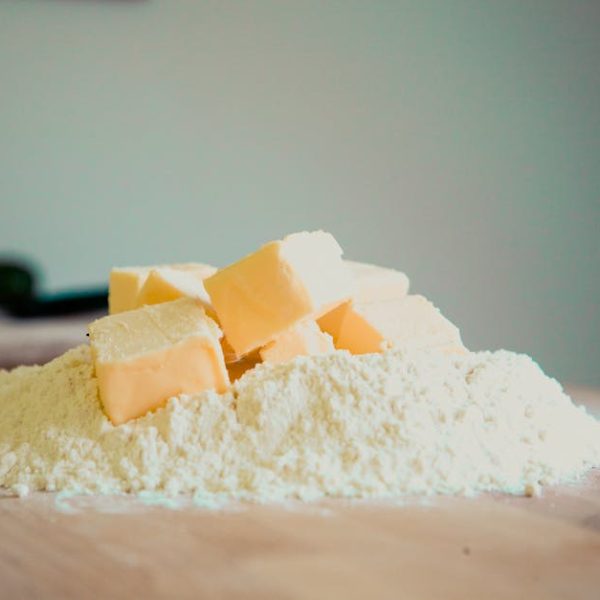Have you ever found yourself enjoying the delicious and nutritious benefits of a hearty tuna salad and wondered, ‘How long can I keep this fresh in the fridge?’ The answer, though not straightforward, can impact your health and the consistency of your meal prep. So grab your fork and note pad, and let’s dive right into understanding the shelf life of tuna salad and how to maximize it.
Understanding the Shelf Life of Tuna Salad
The longevity of your tuna salad can be a tricky thing to pin down as it hinges on several factors—starting with the freshness of the ingredients you use, how you prepare it and, most importantly, how you store it. However, as a general rule of thumb, properly stored and refrigerated tuna salad is usually good for 3-5 days.
Now, let’s chart this out for a clearer picture:
- Freshly made and immediately refrigerated: 3-5 days
- Left out at room temperature for over two hours: Consume or refrigerate immediately
- Packaged tuna salad from store: Check expiry date
Factors Impacting the Longevity of Tuna Salad
Numerous factors can affect the freshness of your tuna salad, and awareness of these can empower you to keep your salad fresher for extended periods.
- Ingredients: Fresh ingredients will prolong the life of your salad as compared to those near their expiration. Always choose fresh produce for the best results.
- Temperature Exposure: The ‘danger zone’ in terms of food safety falls between 40°F degrees and 140°F. Leaving food out in this temperature range promotes bacteria growth, making food go bad faster.
- Time Before Refrigeration: It’s imperative that the salad is refrigerated within two hours of preparation; left out any longer, bacteria begin to multiply rapidly.
Proper Storage Methods for Tuna Salad
Storage is paramount when it comes to extending the life of your tuna salad. Here’s your cheat sheet:
- Always store the tuna salad in a sealed container to prevent exposure to other food smells and outside bacteria.
- Avoid over stuffing the storage container. Allow for some room for the cold air to circulate around the salad for optimized fresh keeping.
- Keep your refrigerator temperature below 40°F to help prolong the salad’s shelf life.
- Consuming leftover salad? Don’t leave it out on the counter for more than two hours!
Signs That Your Tuna Salad Might Have Gone Bad
Detecting a spoiled tuna salad isn’t as challenging as it seems. The following changes are clear signs that it’s time to discard the salad:
- Changes in color: If your tuna salad has developed a darker color around the edges or throughout, it’s best to dispose of it.
- Alterations in texture: If the salad appears slimy or overly soggy, bid it goodbye.
- Offensive smell: A robust or sour scent can be a clear sign of bacteria growth.
- Altered taste: A sour or off-putting taste screams ‘spoiled.’
While it may seem wasteful, consuming spoiled tuna salad can lead to food poisoning – better safe than sorry!
Tips to Increase the Shelf Life of Your Tuna Salad
Here are some tried and tested pointers on how to maximize the shelf life of your sumptuous tuna salad:
- Always use the freshest possible ingredients. Old or near expiration ingredients can speed up the spoilage process of the entire salad.
- Once made, promptly refrigerate the salad. The less time it spends in room temperature, the better.
- Store the salad in a clean, airtight container. This minimizes exposure to bacteria and other food smells.
- Consider adding a bit of lemon juice to your salad. Citric acid can act as a natural preservative and give your salad a bit of zesty flair.
- Do not mix the salad until you plan to eat it. Storing the ingredients separately can prolong their freshness.
Pro-tip Icon : Make your salad in smaller batches for consumption within two to three days. This practice not only ensures freshness but also retains the crunchiness and flavor of the salad.
Now that you’re equipped with the knowledge of the shelf life of tuna salad, storage tips, and how to increase its lifespan, you can enjoy your favorite salad without worrying about food waste or having a compromised taste! And remember, when in doubt, trust your senses – looks, smell, or taste can indicate whether it’s still good to eat or not. Happy healthy eating!
Key Takeaway:
- A tuna salad’s shelf life depends on the freshness of ingredients, preparation method, and storage conditions. Properly stored salad can last between 3-5 days.
- Several factors such as ingredients’ freshness, exposure to external temperature, and storage duration impact your salad’s longevity.
- Proper storage methods, such as using sealed containers and maintaining the fridge’s temperature below 40°F, are crucial for a salad’s freshness.
- Recognizing signs of a spoiled salad, like color variations, texture changes, harsh smell, or altered taste, ensures healthy consumption.
- Maximizing the shelf life of tuna salad involves using fresh ingredients, refrigerating the salad promptly, storing in a clean, airtight container, and adding citric acid, like lemon juice, to act as a natural preservative.
Relish your favorite tuna salad without worrying about its freshness or taste now that you understand its shelf life, storage techniques, and ways to increase its lifespan. Make your salad from fresh ingredients, store it appropriately, and continuously check for signs of spoilage. Enjoy fresh, delectable, and nutritious meals!
FAQs
Q: Does packaged tuna salad last longer than homemade?
A: Packaged tuna salad typically has preservatives, which extends its shelf life to a certain extent. However, always check the expiration date for safety.
Q: Can adding mayonnaise to my tuna salad impact its longevity?
A: Yes, the dairy contents in mayonnaise can affect the salad’s freshness. It’s best to add it just before serving.
Q: Is it safe to freeze tuna salad for longer storage?
A: While freezing can prolong the shelf life, the texture and taste might change. Consume it within one month.
Q: Can veggies in my tuna salad cause it to spoil faster?
A: Vegetables, especially if not fresh, can affect the shelf life of salad. Always use fresh veggies.
Q: Can I use canned tuna for making the salad?
A: Yes, canned tuna can be used, but the freshness and shelf life could be different from fresh tuna.
Feel free to share this article and discover more posts on our site. Explore and enjoy your journey toward better understanding your food and kitchen!






